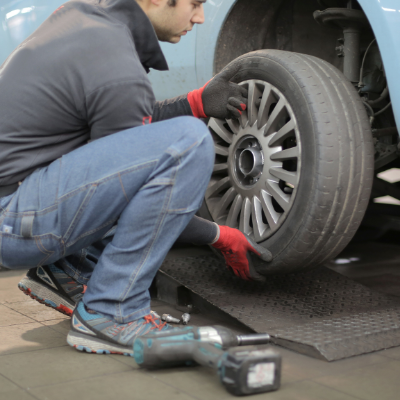Apr 1, 2021

Car labels are part of a regulation that was introduced by the EU back in 2012, designed to offer more information to consumers on tyre safety (similar to the coloured information labels you find on consumer white goods and new cars). As well as that, it will give information on how that tyre impacts the environment. In 2018, it was made a requirement for retailers to show these labels to motorists at the point of purchase.
You may have seen car tyre labels before and recognised them, but what do they mean and how do they benefit you?
The labels have been created with three pictures and are effectively a rating system that lets you know how efficient the tyres you wish to purchase are in certain areas The three pictures mean three separate things - fuel economy, wet grip and noise. But what repercussions do these different efficiencies have on your car?
The fuel efficiency label is concerning a tyre’s rolling resistance and measures the amount of energy lost when a tyre is rolling, which is affected by daily wear and tear. Tyres that have a lower rolling resistance tend to provide better fuel efficiency and with that, they receive a better rating.
The wet grip rating of the label is based on the different stopping distances in wet road conditions. Stopping distance can be affected by many different factors, but tyre grip and tyre pressure are the two main factors. Tyre manufacturers have the difficult job of balancing rolling resistance so it doesn’t dramatically impact your fuel economy, while also ensuring there is sufficient road grip which impacts your stopping distance.
Finally, we have the external noise rating. This is measured in decibels and was designed to help drivers be more aware of noise pollution that can be generated from a tyre. The aim is to reduce noise as driving with quieter tyres can reduce cabin noise.
You may have found yourself wondering what exactly the markings on your tyre mean and why they are so important, this information is necessary when the time comes to get replacement tyres. Every driver wants to maintain optimal safety and performance when buying new tyres and understanding the different markings is an effective way of achieving that.
Take this as an example - 205/55 R 16 91 H:
● 205 – The width of the tyre in millimetres.
● 55 – The height of the tyre sidewall as a percentage of the width of the tyre.
● R – The tyre is of radial construction.
● 16 – The diameter of the wheel’s inner rim in inches.
● 91 – Indicates the load rating of the tyre.
● H – Indicates the tyre speed rating
A tyre speed rating is a maximum speed that the tyre is legally approved to be driven at and is based on the recommended load index that’s also on your tyre. These speed ratings are based on practical tests that engineers run when new tyres are designed, making sure the tyres can safely reach high speeds.
|
Sidewall Marking |
Speed Rating (MPH) |
|
N |
87 |
|
P |
93 |
|
Q |
99 |
|
R |
106 |
|
S |
112 |
|
T |
118 |
|
U |
124 |
|
H |
130 |
|
V |
149 |
|
Z |
150+ |
|
W |
168 |
|
Y |
186 |
Here at MyCarNeedsA.com, we can take the hassle out of your car repairs by gathering quotes from local and reputable mechanics in your area, saving you both time and money Get your quotes!